Airlines for America (A4A), the trade organisation for major US airlines, has announced the commitment of its members to achieve net-zero carbon emissions by 2050, and has pledged to work with government and stakeholders towards a rapid expansion and deployment of commercially-viable sustainable aviation fuel (SAF). It has also set a medium-term goal of 2 billion gallons of SAF to be available for use by US aircraft operators in 2030. A majority of A4A members have already set recent net-zero or carbon-neutral targets, including Alaska, American Airlines, Delta, FedEx, JetBlue, United and associate member Air Canada, but A4A CEO Nicholas Calio said it was important to make an industry-wide commitment on what would be a “massive undertaking”. He said reaching the 2030 SAF goal alone would require an 84% annual average increase in production and called for positive policy support from Congress in upcoming infrastructure legislation. Specifically, A4A is calling for a SAF blender’s credit, further modernisation of the US air traffic management system, expansion of public-private aviation environmental R&D programmes, US implementation of the international CORSIA carbon offsetting scheme and backing for emerging technologies like carbon capture and sequestration.
The association pointed out that US airlines had a strong track record in reducing their GHG emissions footprint and currently accounted for less than 2% of the US GHG inventory, having improved their fuel efficiency by over 135% between 1978 and the end of 2019.
“We are proud of our record on climate change. But we know the climate challenge our country and the world face has only continued to intensify,” said Calio. “Today, we embrace the need to take even bolder, more significant steps to address this challenge. US airlines are ready, willing and able partners, and are proud to be part of the climate change solution.
“To move the needle, we must all work together and the government needs to be an active partner and provide positive infrastructure and other investments to complement our efforts.”
A4A said it was imperative that US federal, state and local governments implement supportive policies and programmes to enable innovation, scale-up, cost-competitiveness and deployment, “while avoiding the implementation of policies that would limit the aviation industry’s ability to invest in emissions-reducing measures.” Although many A4A members were already investing in SAF, the sector required a similar and urgent commitment from policy-makers, fuel producers and others in the SAF feedstock and fuel supply chain to achieve meaningful scalability, it added.
A4A quotes US Environmental Protection Agency figures that just over 2.4 million gallons of neat (100%) SAF were produced in the US in 2019, which compares to the 21.5 billion gallons of conventional jet fuel used by US airlines that year, indicating SAF comprised just 0.01% of total jet fuel supply. SAF that is available, it adds, is typically 3-5 times more expensive than conventional jet fuel. The 2 billion-gallon by 2030 goal would represent SAF take-up of just under 10% of total jet fuel based on 2019 consumption.
The recommended SAF-specific blender’s tax credit would require federal approval of a 10-year performance-based tax credit at $1.50 per gallon for SAF that achieves a 50% lifecycle GHG emissions benefit and additional credit up to $2/gallon for SAF with GHG emissions savings above 50%. In addition to the blender’s tax credit, A4A also suggests a SAF-specific tax credit for the annual production of SAF. It also calls for SAF production grants and loan guarantees, SAF-specific R&D, an enhanced Department of Energy focus on SAF and support for the ASTM review and approval process for SAF pathways.
While stressing its members would be focused on means to reduce GHG emissions within the aviation sector, A4A said innovations in other sectors to support deployment of cleaner energy and carbon removals that could be leveraged by airlines were critical. These include carbon capture and sequestration/storage (CCS), direct air carbon capture and sequestration (DACCS) and proven nature-based solutions that remove and sequester carbon.
As well as the medium and long term goals, A4A reaffirmed the global aviation industry carbon-neutral growth goal to limit net carbon emissions to 2019 levels, “subject to critical aviation infrastructure and technology advances achieved by the industry and government, and to consider making the baseline more stringent taking into account longer-term emissions reduction goals and developments.”
A4A said it welcomed US engagement at ICAO on discussions to reach a consensus on a long-term climate goal at the UN agency’s Assembly in 2022.
Photo: Dallas Fort Worth International Airport


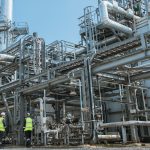
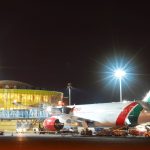

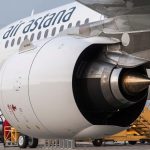

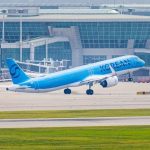



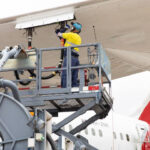


More News & Features
US rebukes ICAO for wasting resources on climate financing initiatives and warns against global levies
Unifuel’s 100% drop-in SAF production technology passes first test in ASTM qualification process
Southwest Airlines sells ethanol technology subsidiary SAFFiRE Renewables to Conestoga
Biogas-to-SAF company Syzygy awards FEED contract to Kent for Uruguay facility
US SAF producer XCF Global aims for fast growth as it goes public
Canadian SAF projects involving Alder and Dimensional receive Boeing investment